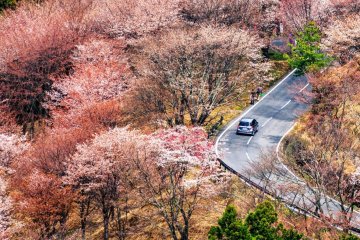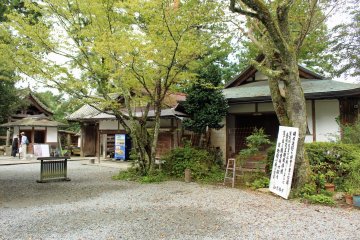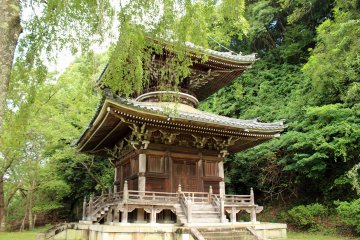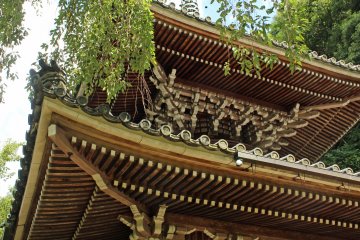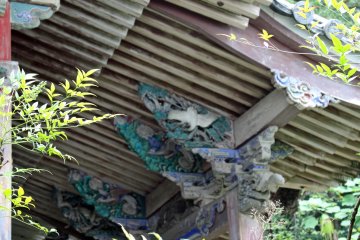Despite being surrounded by the hundreds of beautiful and historical artifacts in Nyoirinji Temple’s exhibition hall my attention was captured by a tatami chair shaped like a small chaise lounge. I’d never seen one before and the sign attached to it invited visitors to, “Feel free to recline upon the chair” and “worship and reflect upon” the image of a Buddha. I looked up at the ceiling where there was indeed an image of a Buddha, a seated and peaceful 6-armed Buddha. I took the sign’s invitation and stared up at the beautifully painted, almost life-like but for the extra limbs, Buddha and began a relaxing meditation.
Nyoirinji Temple is a Jodo Buddhist temple founded between 901 and 922. Built on the slope opposite the town of Yoshinoyama it became the preferred place of worship for Emperor-in-exile Go-Daigo, and his descendants and heirs in the 13th and 14th centuries. After trying and failing to reestablish Imperial rule in the revolt against the Kamakura Shogunate (known as the Kenmu Restoration) in 1333, Emperor Go-Daigo fled to Yoshino and established what became known as the Southern Court setting up the Namboku Period in which Japan had two Imperial Courts fighting for legitimacy. Many of the artifacts in Nyoirinji’s treasure hall date from this period. One of the most thought provoking of these artifacts is the temple door inscribed with a name and a haiku poem. Kusunoki Masatsura, a retainer and samurai loyal to Emperor Go-Daigo carved his name and the haiku onto the door using the arrowhead of one of his arrows before going off to fight the army of the northern Kyoto Court’s forces in the Battle of Shijo Nawate, they are the last words he ever wrote. Kusunoki appeared to know that his end was coming and his foresight is reflected in the haiku:
“Kaeraji to I have the feeling
Kanete omeba I will not return living
Azusayami So among the names
Nakikazu ni iru of those who died by the bow
Na wo zotodomuru…” I do carve my own…
Nyoirinji Temple’s garden was another surprise thought provoking in another way. A couple of areas next to a couple of the old structures were slightly unkempt and the combination of old buildings and plants left to nature’s devices recalled images from the movie “The Secret Garden.” That memory from childhood left me even more thoughtful than did the treasure hall and its artifacts. The 2 story pagoda and its surrounding sakura trees with their leaves lit up in the late summer morning light and the views to the main town of Yoshino across the narrow valley completed my reflective and relaxing walk through the grounds. The light on the sakura trees’ summer leaves made me want to return here in the fall and spring to see the temple when the colors are at their peak. Happy travels!



